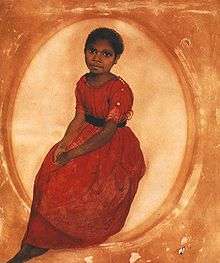Thomas Bock

Thomas Bock (1790 – 19 March 1855), was an Australian artist.[1]
Bock was born in Sutton Coldfield, Warwickshire, England.[1] Bock was an engraver in Birmingham; in 1817 he was awarded the silver medal by the Society of Arts and Commerce for an engraving of a portrait.
In April 1823 Bock was found guilty at the Warwick Assizes of administering drugs to a young woman and was transported to Van Diemen's Land (now Tasmania) as a convict. Bock was set to work preparing plates for banknotes, and then to official assignments making portraits of recently executed criminals and of Tasmanian Aborigines.[1] Bock was one of the exhibitors at the first major art exhibition, in Hobart. His official work produced private commissions, and by the time of his death in Hobart, Tasmania, he was a successful portraitist specialising in miniatures. Bock was one of the most highly skilled of the early convict artists. Much of his apparently voluminous output remains lost, or at least unidentified, but he can be credited with two Australian "firsts": he left behind a small body of nude studies, rare in early colonial art; and he was one of the first in the colonies to experiment with photography.
See also
References
- 1 2 3 William Bryden, 'Bock, Thomas (1790–1855)', Australian Dictionary of Biography, Volume 1, MUP, 1966, pp 123–124.
External links
| Wikimedia Commons has media related to Thomas Bock. |
- Bock's work in Picture Australia
- Bock's work in the National Library of Australia, Canberra
- Serle, Percival (1949). "Bock, Thomas". Dictionary of Australian Biography. Sydney: Angus and Robertson. Retrieved 17 April 2010.